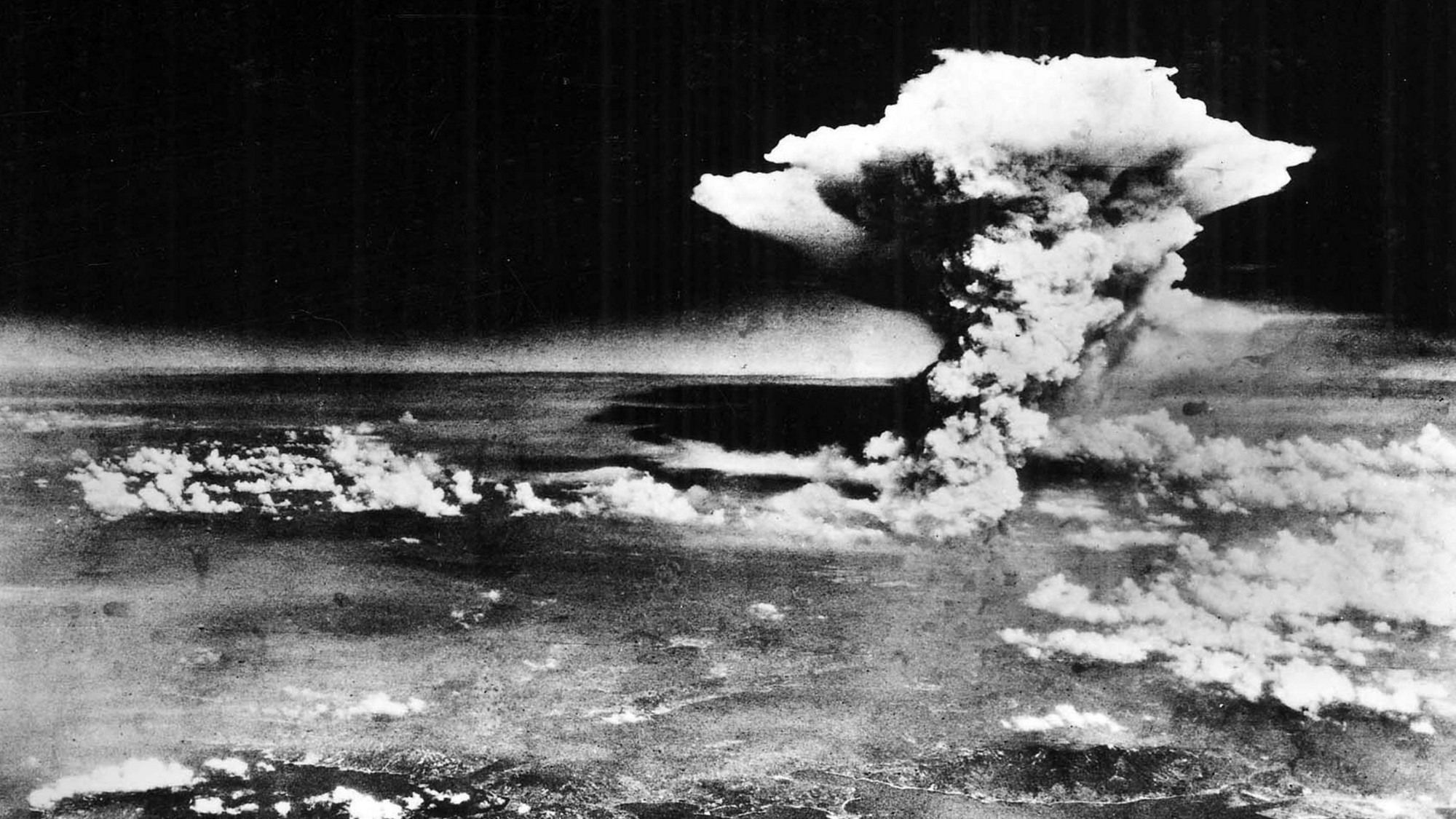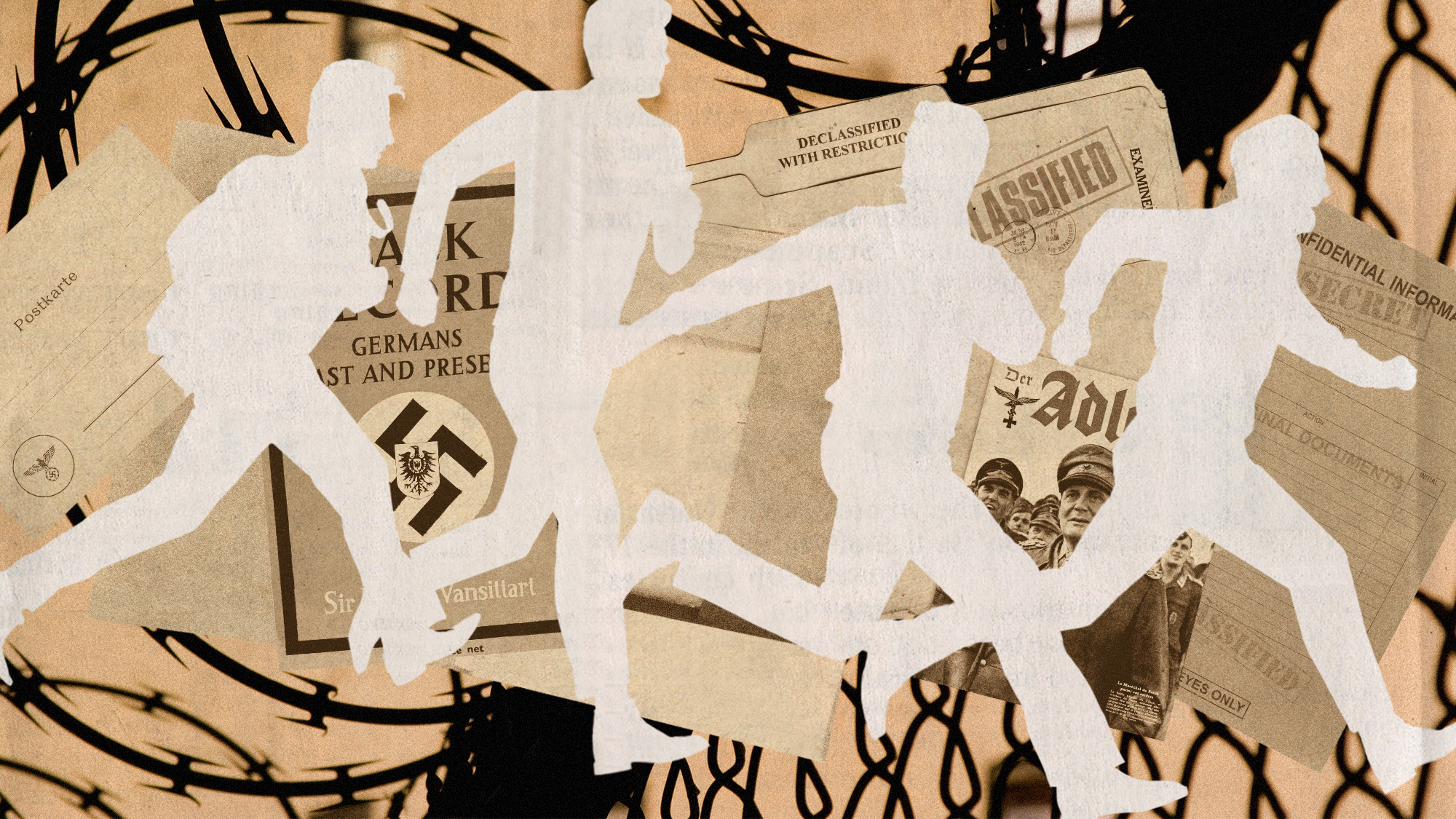What are sonic attacks?
Are US diplomats abroad being deliberately targeted – and is this a new phenomenon?
The US has evacuated more of its embassy staff from China, reviving fears that American government personnel may be the target of “sonic attacks” by a rival country.
Last month, it was revealed that a US diplomat, who had reported abnormal sensations of sound and pressure while working in the US consulate in the city of Guangzhou, had been flown home and later diagnosed with mild traumatic brain injury.
A State Department warning was later extended to all American citizens in China, urging them to seek medical help if they feel similar symptoms.
The Week
Escape your echo chamber. Get the facts behind the news, plus analysis from multiple perspectives.

Sign up for The Week's Free Newsletters
From our morning news briefing to a weekly Good News Newsletter, get the best of The Week delivered directly to your inbox.
From our morning news briefing to a weekly Good News Newsletter, get the best of The Week delivered directly to your inbox.
So what has happened now?
The US State Department has announced it has sent “a number of individuals” working in its Guangzhou consulate back to the US, over fears they were also the target of sonic attacks.
In an interview with The New York Times, one of the officials flown back to the US, security engineer Mark Lenzi, described the sounds he heard as marbles rolling around a metal funnel.
Over the course of 2017, Lenzi said he and his wife experienced headaches, sleeplessness and nausea, and heard odd noises, but they did not connect it to the “sonic attacks” until last month when the US government issued the alert.
A free daily email with the biggest news stories of the day – and the best features from TheWeek.com
The latest evacuation suggests what was previously described as an isolated case may turn into a “wider diplomatic crisis”, at a time when US-China ties are already at a low, says The Guardian.
Is this the first time this has happened?
No.
Last year, the US embassy in Havana, Cuba, evacuated 24 of its staff, after many started to complain of odd ailments, including dizziness, nausea and hearing problems. More than 20 US government workers who had been stationed in Cuba at the time were later found to have some brain abnormalities.
At the time, the cause was attributed to a sonic weapon operating outside the range of audible sound, used either inside or outside the residences of diplomats in Havana.
“The weapon caused immediate physical sensations including nausea, headaches and hearing loss,” according to CNN's report.
There are a number of theories about who might have been behind the attacks, and whether Cuba or a third country were involved. Cuba has repeatedly denied any part in the attacks and – unusually – allowed the FBI and Royal Canadian Mounted Police to travel to Havana to investigate.
So is it part of wider pattern?
Two incidents do not make a pattern, but many have said this looks like more than just a coincidence.
As yet, intelligence operatives have no credible explanations for what is happening, although “some US officials suspect Beijing and Moscow may be involved”, says Vice News.
The Guardian reported last year that investigators were considering whether the incidents were carried out by Russia or another third country, "possibly operating without the knowledge of Cuba's formal chain of command".
Fear that US citizens are being deliberately targeted by third-party state actors has prompted US Secretary of State Mike Pompeo to set up a task force to examine so-called sonic attacks and respond to “unexplained health incidents” affecting US diplomats and their family members.
Are sonic attacks even possible?
While the US has been quick to point fingers, some scientists and engineers have been questioning whether such attacks are possible, and if the diplomats’ symptoms could have been caused by a sonic attack at all.
In fact, “very little data exist on whether and how ultrasound in the air affects human health”, says Science News.
Andrew Oxenham, a hearing researcher at the University of Minnesota, says that generating enough acoustical energy to cause hearing loss and brain damage from those types of sound waves would be no easy feat.
“Even to get across the street and into a building, you’d have to have a loud speaker the size of a building,” he said.
Kevin Fu, computer scientist at the University of Michigan, says the so-called sonic attacks may not have been attacks at all, but eavesdropping gone awry.
History of sonic warfare
World War II: The loud war
Although sonic weapons sound like the stuff of sci-fi fantasy, they've been in use for decades, both in theory and in practice. Predictably it was the outbreak of war that inspired their use.
Toward the end of World War II, Adolf Hitler's chief architect Albert Speer reportedly drew up plans to create an "acoustic cannon", writes Motherboard, a division of Vice news. By igniting flammable gases – namely oxygen and methane – in a highly resonant chamber, Speer calculated that the resulting reaction could create 1,000 explosions per second, the sound of which would then be narrowed into a targeted beam by reflector dishes.
"By repeatedly compressing and releasing particular organs in the human body, the cannon could potentially kill someone standing within a 100-yard radius in around thirty seconds", Motherboard says. The weapon was never used in battle.
Subsequent research confirmed Speer's theory that it would be possible to kill or severely impair people using sound.
But this not the only type of sonic warfare. While Speer's aim was to kill, other military forces have used sound to psychologically batter their enemy.
During the Vietnam War, the US military took part in "audio harassment" campaigns against the Viet Cong, blaring a series of "haunting sounds" said to represent the souls of the dead at the enemy, according to historian Steve Goodman.
This process, named Operation Wandering Soul by the US military, inspired the iconic scene from Francis Ford Coppola's Apocalypse Now in which Richard Wagner's Ride of the Valkyries is played from attack helicopters flying overhead.
Police use of LRADs
Controversially, the incapacitating abilities of acoustic weapons have been adopted by police forces for use against protesters and rioters. Israel's police force, for example, deployed a vehicle-mounted device known colloquially as "The Scream" after a violent demonstration by Palestinians and Jewish sympathisers against Israel's West Bank separation barrier in 2005.
Numerous US police forces have used their own iterations of Long Range Acoustic Devices (LRADs) to disperse crowds, notably during protests outside the G-20 conference in Pittsburgh in 2009, the first use of an LRAD system in the US.
Sound effects
There's no strict definition of a sonic weapon and the effects of one type may be wildly different than another.
The LRAD systems used against protesters are at one end of the spectrum. Rather than causing long-lasting damage to organs, LRADs are designed – to put it simply – to be just a loud deterrent, frequently used by military and civilian ships in conflict zones in order to deter pirate hijackers.
At the other end of the spectrum are sonic weapons designed to cause permanent damage. Speer thought it would be possible to build an acoustic cannon, which would compress vital organs in the body repeatedly until they were fatally damaged.
Israel has created the "Thunder Generator" which creates explosions in a similar manner and could be deadly at close range. It was designed for use in bird and pest control but, as Wired writes, it could also be a "good way of keeping stone-throwing youths out of a sensitive area without using excessive force".
Israel has not released the exact details of The Scream, but the effect of the device is overwhelming, according to media reports. "Protesters covered their ears and grabbed their heads, overcome by dizziness and nausea," wrote CBS. "The vehicle-mounted device began sending out bursts of audible, but not loud, sound at intervals of about 10 seconds."
Infrasound and ultrasound devices
Infrasound is sound below the human hearing threshold (lower than 20Hz). According to the Science and Global Security journal, infrasound at a high volume can cause "resonances in body cavities, disturbances in organs, visual blurring, nausea, discomfort and death".
Ultrasound is above the human hearing threshold (higher than 20kHz) and can cause lung and brain damage. It can also, unusually, "heat up the head" of a victim, reports LiveScience.
Infrasound has much longer waves than ultrasound, meaning it is effective at far greater distances.
The Cuban crisis
The governments have released limited information about the Havana attacks.
On 9 August, US State Department spokeswoman Heather Nauert said government personnel in Havana suffered "physical symptoms" from a series of undisclosed events.
On 10 August, the department said officials were possibly targets of an "acoustic attack" and at least two had "such serious health problems they needed to be brought back to the US for treatment".
On 20 August, it was revealed that more than 10 US and five Canadian diplomats and their family members received treatment after attacks that allegedly started in November 2016. The Cuban government expressed concern over the attacks, writes The Hill.
The sound waves affecting the victims are believed to be outside the range of human hearing, meaning they are being transmitted with either ultrasonic or infrasonic technology. So far, no country has openly disclosed the use of inaudible sonic weapons and the technology required to create an effective weapon would be highly advanced.
"One may speculate whether ultrasound was used, but projecting it over a considerable distance and/or through walls or closed windows is difficult," meaning it may have to have been planted within the offices or residences of those affected, Jurgen Altmann, a physics professor at Technischen Universitat Dortmund in Berlin, told CNN.
The US is considering whether a third country was involved as "payback" for actions that the US has taken elsewhere or to "drive a wedge" between the US and Cuba, CNN reports.
Among the many mysteries still to unravel, is whether Russia, China, North Korea, Venezuela or Iran could have been involved and, if so, why target Canada as well as the US? So far, investigators have not narrowed down the possibilities to one particular suspect.
-
 Why is Trump’s alleged strike on Venezuela shrouded in so much secrecy?
Why is Trump’s alleged strike on Venezuela shrouded in so much secrecy?TODAY'S BIG QUESTION Trump’s comments have raised more questions than answers about what his administration is doing in the Southern Hemisphere
-
 Vance’s ‘next move will reveal whether the conservative movement can move past Trump’
Vance’s ‘next move will reveal whether the conservative movement can move past Trump’Instant Opinion Opinion, comment and editorials of the day
-
 Why recognizing Somaliland is so risky for Israel
Why recognizing Somaliland is so risky for IsraelTHE EXPLAINER By wading into one of North Africa’s most fraught political schisms, the Netanyahu government risks further international isolation
-
 How China rewrote the history of its WWII victory
How China rewrote the history of its WWII victoryIn Depth Though the nationalist government led China to victory in 1945, this is largely overlooked in modern Chinese commemorations
-
 America's controversial path to the atomic bomb
America's controversial path to the atomic bombIn Depth The bombing of Hiroshima followed years of escalation by the U.S., but was it necessary?
-
 Argentina lifts veil on its past as a refuge for Nazis
Argentina lifts veil on its past as a refuge for NazisUnder the Radar President Javier Milei publishes documents detailing country's role as post-WW2 'haven' for Nazis, including Josef Mengele and Adolf Eichmann
-
 D-Day: how allies prepared military build-up of astonishing dimensions
D-Day: how allies prepared military build-up of astonishing dimensionsThe Explainer Eighty years ago, the Allies carried out the D-Day landings – a crucial turning point in the Second World War
-
 The battle of Bamber Bridge
The battle of Bamber BridgeIn Depth The new Railway Children film draws on a forgotten wartime episode: a skirmish between black and white US soldiers in Lancashire
-
 Vladimir Putin’s narrative of Russian victimhood examined
Vladimir Putin’s narrative of Russian victimhood examinedfeature Russian president has repeatedly pointed to his country’s history to justify Ukraine invasion
-
 Can you solve GCHQ’s LGBT-themed Alan Turing brain-teaser?
Can you solve GCHQ’s LGBT-themed Alan Turing brain-teaser?Puzzles and Quizzes Spooks release puzzle as £50 note dedicated to the code breaker enters circulation
-
 Seven tragic Second World War poems
Seven tragic Second World War poemsIn Depth Less well-known than those of the First World War, the poems of WWII are just as gut-wrenching